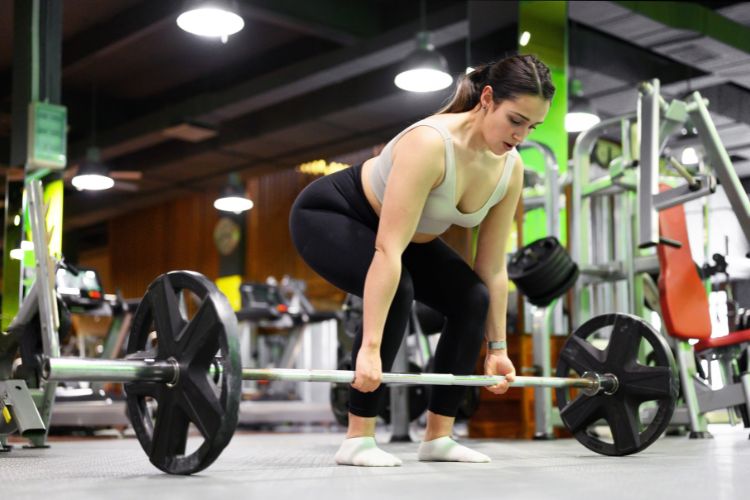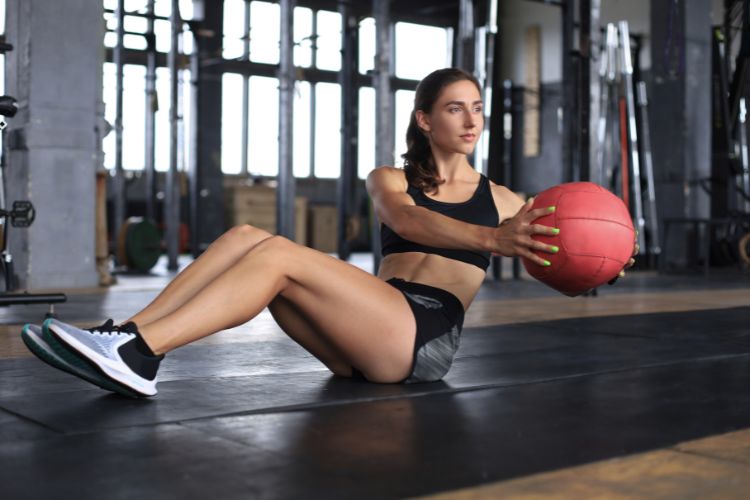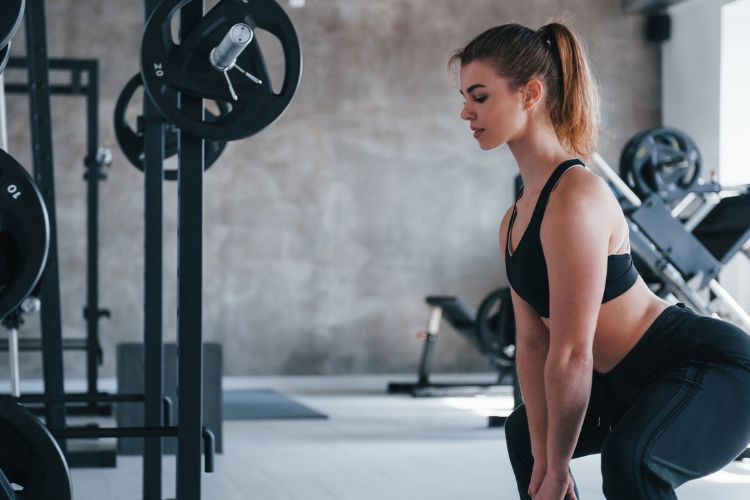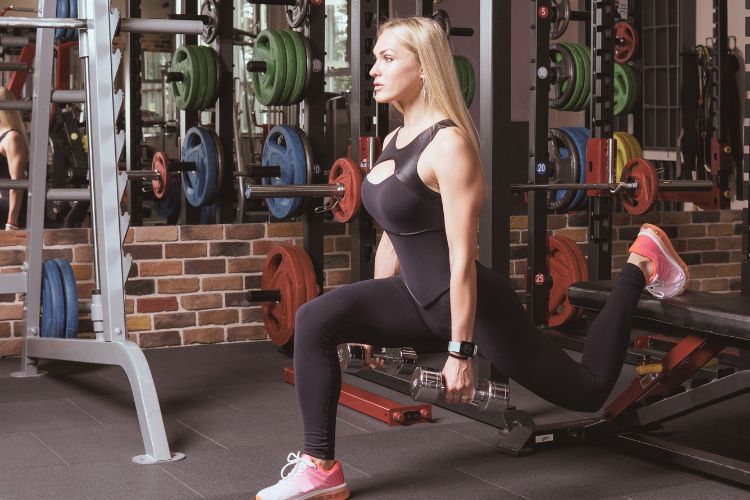Sign up for workout ideas, training advice, reviews of the latest gear and more.






When it comes to building lower body strength, improving muscle tone, and enhancing overall fitness, squats are often considered the king of exercises. However, traditional squats can be intimidating or challenging for some women, especially those who are new to strength training or have limited mobility. Enter the dumbbell bench squat—a versatile, accessible, and highly effective variation that combines the benefits of squats with the stability of a bench. In this blog post, we’ll dive deep into everything you need to know about dumbbell bench squats, including their benefits, proper form, variations, and tips for incorporating them into your fitness routine.
Dumbbell bench squats are a hybrid exercise that combines elements of a traditional squat with the support of a bench. This exercise involves holding dumbbells while performing a squat, using a bench as a guide to ensure proper depth and form. The bench acts as a tactile cue, helping you maintain consistency in your movement and preventing you from squatting too low or not low enough.
This exercise is particularly beneficial for women because it allows for controlled movement, reduces the risk of injury, and can be easily modified to suit different fitness levels. Whether you’re a beginner or an experienced lifter, dumbbell bench squats can help you build strength, improve balance, and tone your lower body.
Dumbbell bench squats primarily target the muscles in your lower body, including your quadriceps, hamstrings, glutes, and calves. By adding dumbbells, you increase the resistance, which helps build muscle strength and endurance over time.
Using a bench as a guide helps you maintain proper form and balance throughout the movement. This is especially beneficial for women who are new to squats or those who struggle with stability during traditional squats.
Regularly performing dumbbell bench squats can help tone and sculpt your legs, glutes, and even your core. The added resistance from the dumbbells ensures that your muscles are working hard, leading to a more defined and athletic appearance.
The bench provides a safety net, ensuring that you don’t squat too low or compromise your form. This makes dumbbell bench squats a safer alternative to traditional squats, especially for women with knee or back issues.
Squats are a functional exercise, meaning they mimic movements you use in everyday life, such as sitting down and standing up. By incorporating dumbbell bench squats into your routine, you’ll improve your ability to perform daily activities with ease.
Whether you’re a beginner or an advanced lifter, dumbbell bench squats can be easily modified to suit your fitness level. You can adjust the weight of the dumbbells, the height of the bench, or the number of repetitions to match your strength and goals.
Proper form is crucial to maximizing the benefits of DBS and preventing injury. Follow these step-by-step instructions to ensure you’re performing the exercise correctly:
While dumbbell bench squats are relatively straightforward, there are a few common mistakes that can compromise your form and reduce the effectiveness of the exercise:
Leaning forward places unnecessary strain on your lower back. Keep your chest up and maintain a neutral spine throughout the movement.
Failing to touch the bench means you’re not squatting to the proper depth. Ensure your glutes lightly touch the bench with each repetition.
Using dumbbells that are too heavy can lead to poor form and increase the risk of injury. Start with lighter weights and gradually increase as you build strength.
Performing the exercise too quickly can reduce its effectiveness and increase the risk of injury. Focus on controlled, deliberate movements.
Once you’ve mastered the basic dumbbell bench squat, you can try these variations to keep your workouts challenging and engaging:
This variation increases the difficulty by focusing on one leg at a time. It’s an excellent way to improve balance and target each leg individually.
Adopting a wider stance places more emphasis on your inner thighs and glutes. This variation is great for targeting those hard-to-reach areas.
After touching the bench, perform small pulses before returning to the starting position. This variation increases time under tension, leading to greater muscle activation.
Add an upper body component by performing an overhead press with the dumbbells as you return to the starting position. This variation engages your shoulders, arms, and core.
Before starting your workout, spend 5-10 minutes warming up with dynamic stretches or light cardio. This prepares your muscles for the exercise and reduces the risk of injury.
If you’re new to dumbbell bench squats, start with lighter weights to focus on mastering your form. Gradually increase the weight as you become more comfortable with the movement.
Incorporate dumbbell bench squats into a full-body or lower-body workout. Pair them with exercises like lunges, deadlifts, and step-ups for a comprehensive routine.
Keep a workout journal to track the weight, sets, and repetitions you perform. This helps you monitor your progress and stay motivated.
If you experience pain or discomfort during the exercise, stop immediately and reassess your form. It’s better to perform the exercise correctly with lighter weights than to risk injury.
Yes, dumbbell bench squats are an excellent exercise for beginners because the bench provides support and helps ensure proper form.
Aim to include DBS in your workout routine 2-3 times per week, allowing at least one day of rest between sessions to promote muscle recovery.
Absolutely! All you need is a sturdy bench and a pair of dumbbells. This makes DBS a convenient exercise for home workouts.
Dumbbell bench squats primarily target the quadriceps, hamstrings, glutes, and calves. They also engage your core and lower back for stability.
While dumbbell bench squats primarily build strength and muscle tone, they can also contribute to weight loss by increasing your overall calorie burn and boosting your metabolism.
Dumbbell bench squats are a versatile, effective, and accessible exercise that offers numerous benefits for women of all fitness levels. Whether you’re looking to build strength, improve muscle tone, or enhance your overall fitness, this exercise is a valuable addition to your workout routine. By following the tips and guidelines outlined in this post, you can perform DBS with confidence and achieve your fitness goals. So grab a pair of dumbbells, find a bench, and start squatting your way to a stronger, healthier you!
Stay up to date on the latest women’s health, fitness and lifestyle trends and tips.